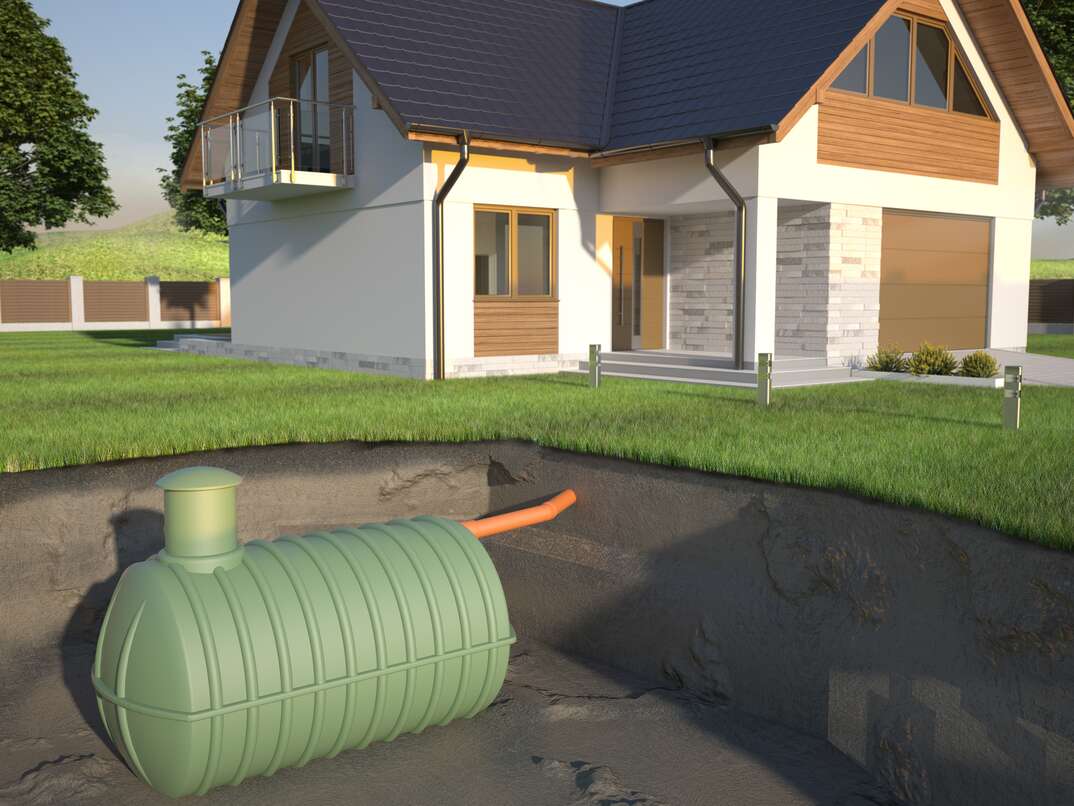Certain aspects of homeownership remain hidden until they need attention. The septic tank is among that is a crucial but frequently ignored component of a house. We often take it for granted as if it can do its job with no upkeep or stress. However, like any other system, septic tanks have a lifespan, and eventually they’ll require replacement.

The cost to replace the septic tank can pose an immense financial burden on homeowners who don’t have the right plan. Numerous factors influence the total cost, making it necessary to know the elements that affect budgeting for the replacement of a septic system.
In order to determine the price of a septic tank replacement, you must look beyond the price. It’s not just an issue of taking out the old tank and putting in another one. More than that, a variety of components and services contribute to the overall cost. Each step, from getting permits to hiring contractors and even excavation, will cost money. Homeowners need to budget accordingly.
One of the primary concerns is the septic tank cost of replacement, which includes the cost of constructing a the leach field and septic tank. The cost of a new tank may vary greatly based on the dimensions and material of the tank, and also the complexity of installation. Also, the area of your home, the local regulations, and soil conditions will also influence the cost. It is recommended to consult with experts in septic systems who can assess your requirements and give you an accurate estimate. They’ll also think about the dimensions and layout of the leach field to give you a complete idea of how much the project is going to cost.
Drainfields or leach fields are another major cost. The drainfield plays an essential part in wastewater treatment and dispersal. Removing a damaged or inoperative leach field needs careful planning and can significantly impact the overall cost of septic replacement. Factors like the size of the leach field soil composition and accessibility all impact the cost of replacement, making it important to think about these factors when formulating the cost total.
The cost of a brand new septic system can be not just tangible, they are also intangible. The process could disrupt your everyday routine, and require the temporary removal of your house or reduce consumption of water during installation. The inconveniences you face should be considered into your plans, since they could impact your daily routine, and possibly lead to additional costs like accommodation costs or adjustments to your daily routine.
It’s important to remember that maintaining your septic tank on a regular basis is essential for extending its lifespan and minimizing the possibility of premature replacement. Failure to perform maintenance could result in bigger issues later on, including damage to the drainfield or malfunction of the tank. Incorporating septic system maintenance costs in your budget is an intelligent decision that will save money in the long run.
By now, you may have realized that determining the septic system cost is not a straightforward task. The cost of a septic tank replacement will be determined by a range of elements. These include the dimensions, materials and complexity of the installation as well as the condition of the leach field. The place of your house and the local laws may be a factor in the price. It is vital to seek advice from experts who have experience the replacement of septic systems.
You may be surprised when you replace your septic tank and discover the additional costs that you did not anticipate. These costs are likely to quickly add up, and you must be aware prior to making any decisions.
Hidden costs associated with the replacement of septic systems include:
The cost of permits and inspections. Your local authorities will require permits before beginning the work of replacing your septic systems. The permits are costly as well as you might require a fee for inspections.
The cost of excavation and removal. The older septic system has to be removed and excavated prior to the installation of a new system. is installed. It can be an expensive process, particularly if your system is in a hard-to-access location.
The expense of backfilling and the grading. After the old system is removed, it will be essential to grade and fill the hole. This is essential to ensure that the new system is draining.
The cost of landscaping is a significant expense. When the new system is installed, you might need for landscaping work to keep the area looking tidy and neat. This can be costly, particularly if landscaping services are needed.
When you plan to replace your Septic tank, it’s essential to consider these hidden costs. This will prevent any unpleasant surprise.
These eco-friendly options are an ideal choice for budget-conscious homeowners. These low-cost alternatives are environmentally friendly, as they reduce water pollution and help reduce runoff. Furthermore, eco-friendly septic solutions are becoming increasingly accessible and affordable, making the ideal choice for those seeking to lower their environmental impact without breaking the bank. Moving to a more sustainable method may come with some upfront costs, but they can be easily compensated by the long-term savings. It’s not just a trendy trend, but a lifestyle change anyone who are serious about protecting our planet for the next generation. You can have peace of assurance that you’re helping the world community. It also will ensure that your property functions effectively, with less work and less monthly expenses.